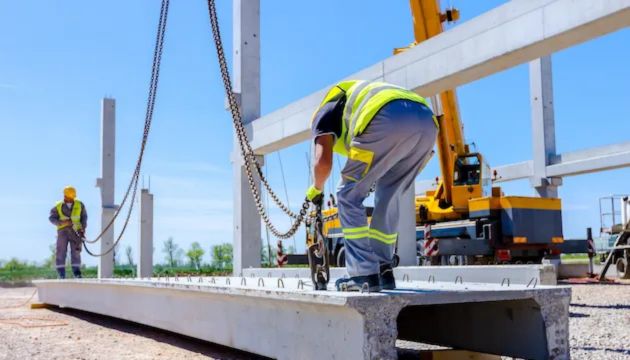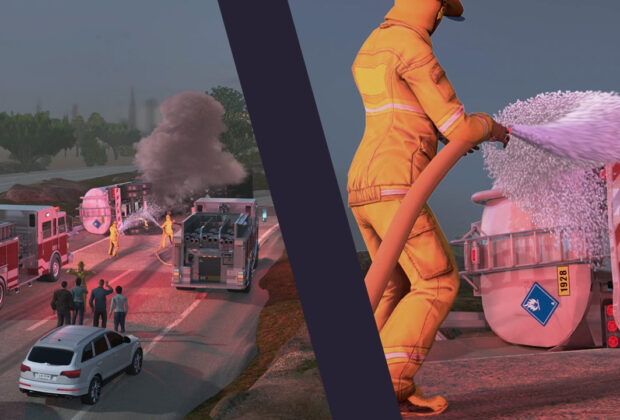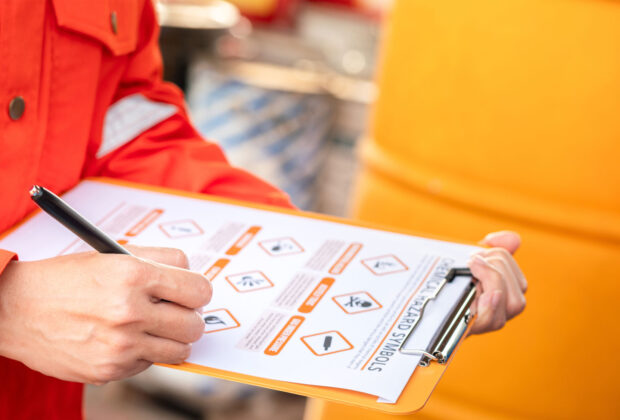Every lift on a construction site, plant floor, or industrial facility carries risk. Whether it is a 500-kg steel beam or a small equipment module, one mistake in load estimation, signaling, or rigging setup can lead to property damage, injuries, or even fatalities.
That is why Hoisting and Rigging Certification has become essential for Canadian worksites. It’s not just about meeting compliance standards; it’s about building safety, trust, and precision into every lift.
Why Hoisting and Rigging Training Matters
Every year, Canada’s construction and industrial sectors record thousands of lifting-related incidents, most of them preventable.
According to WorkSafeBC and other provincial safety boards, improper rigging or signaling remains one of the top causes of workplace injuries involving cranes or hoisting equipment.
Hoisting and Rigging Training equips workers with:
- The knowledge to inspect slings, hooks, and hardware properly
- Skills to calculate safe working loads and angles
- Communication signals for coordination with crane operators
- Procedures for load control, balance, and emergency response
Certification compliant to CSA and OHS standards isn’t just paperwork — it’s a critical safeguard. Workers who complete Hoisting and Rigging Certification are statistically less likely to cause or experience lifting-related injuries.
Get started today: Hoisting and Rigging Training
The Real Causes of Lifting Accidents
Before we understand how certification helps, it’s important to identify what causes lifting accidents in the first place.
Human Error and Communication Failures
Inadequate training, unclear hand signals, and poor coordination between spotters and operators often lead to dropped loads or collisions. Even experienced crews can make costly mistakes when communication isn’t standardized.
Equipment Misuse or Overload
Failure to inspect equipment or exceeding rated capacity can cause mechanical failure. A sling weakened by corrosion or an overloaded hook can snap without warning.
Poor Load Assessment and Planning
Not knowing the weight, center of gravity, or sling angle before lifting leads to unbalanced loads. This is one of the leading causes of tip-overs and swinging loads.
Each of these risks can be prevented through structured Hoisting and Rigging Training that reinforces fundamentals and real-world application.
How Hoisting and Rigging Certification Prevents Accidents
1. Builds Competent and Confident Operators
Trained operators and riggers make better decisions under pressure. They understand the physics behind lifting, know how to calculate load weight and sling angle, and can recognize unsafe situations before they escalate.
Confidence built through certification translates directly into safety performance — a well-trained rigger doesn’t guess; they calculate.
2. Promotes Standardized Communication
Hoisting and Rigging Certification programs emphasize standard crane signals and team communication protocols.
This eliminates confusion and ensures that everyone on site — from the signal person to the crane operator — speaks the same “safety language.”
3. Reinforces Inspection and Pre-Lift Checklists
Accidents often occur when inspections are skipped or rushed. Certified training ensures workers perform proper pre-lift checks on slings, hooks, and shackles. A simple daily inspection can prevent catastrophic failures that damage equipment or endanger lives.
Components of Effective Hoisting and Rigging Training
Key components include:
- Understanding Load Dynamics: Calculating load weight, center of gravity, and sling tension.
- Inspection Routines: Identifying defects in wire ropes, chains, and lifting devices.
- Rigging Hardware and Sling Selection: Matching hardware to job type and environment.
- PPE and Site Safety: Helmet, gloves, eye protection, and situational awareness.
- Signaling and Communication: Using CSA-approved hand signals to prevent miscommunication.
- Refresher Training: Every three years or after role changes, as required by OHS standards.
These elements ensure workers don’t just pass certification — they internalize safety practices.
Resource: Hoisting and Rigging Certification
Beyond Compliance: Building a Culture of Lift Safety
Achieving compliance is the first step — but real success comes when safety becomes second nature.
Hoisting and Rigging Training builds that mindset through consistent reinforcement.
Leadership and Accountability
When supervisors lead by example and ensure workers apply what they learn, safety becomes part of everyday site behavior.
Integrating safety talks and peer inspections after certification ensures continuous improvement.
Integrating Hoisting and Rigging with Lift Device Training
Safe lifting starts long before the crane moves. It begins with knowing how to prepare, handle, and control loads using the right equipment. Danatec’s Lifting Device Training Courses build on Hoisting and Rigging Certification to give workers a complete understanding of how to plan and execute lifts safely.
- Overhead Crane Certification: Covers safe crane operation, signaling, and inspections — reinforcing rigging principles for controlled, balanced lifts.
- Mobile Boom Crane Certification: Focuses on load charts, stability, and safe lifting practices — ideal for operators managing complex hoisting tasks.
These courses complement Hoisting and Rigging Certification to build a more complete, compliant lifting safety program, from ground prep to final placement.
Explore all of Danatec’s Lifting Device Courses
The Business Case for Hoisting and Rigging Certification
While safety is the primary goal, the financial and operational benefits of certification are significant.
1. Reduced Costs and Downtime
Each prevented incident saves thousands, potentially millions in repair costs, medical claims, and lost productivity. A single dropped load can halt operations for days. Certification prevents these disruptions.
2. Lower Insurance Premiums and Audit Scores
Insurance providers reward companies with proven safety programs. Certified crews mean fewer claims and better compliance scores.
3. Improved Client Trust and Brand Reputation
Clients prefer contractors with proper safety training. A workforce trained in Hoisting and Rigging Certification shows professionalism and reliability.
4. Higher Employee Retention and Morale
When workers feel safe and valued, they stay longer. Certification signals investment in their growth and safety — increasing engagement.
Best Practices to Maintain Safe Lifting Operations
To ensure certification has a lasting impact, employers should adopt the following best practices:
- Refresh Knowledge Regularly: Host quarterly toolbox talks on rigging safety.
- Update Equipment Inspections: Maintain logs for each hoist, sling, and crane.
- Consistent Near-Miss Reporting: Reward transparency — it helps prevent larger incidents.
- Cross-Train Employees: Combine Hoisting and Rigging Training with other task-based training, such as the use of the mechanical devices lifting the load.
- Audit Your Program: Conduct annual reviews to assess compliance and identify gaps.
Conclusion — Safer Lifts Begin with Certified Training
Every successful lift begins long before the crane moves — it starts with knowledge, preparation, and certification.
Hoisting and Rigging Certification gives workers the confidence, competence, and caution to perform their roles safely.
By investing in structured Hoisting and Rigging Training, companies do not just meet compliance requirements; they save lives, prevent losses, and build a culture of excellence.
Enroll today: Hoisting and Rigging Training




Comments are closed.